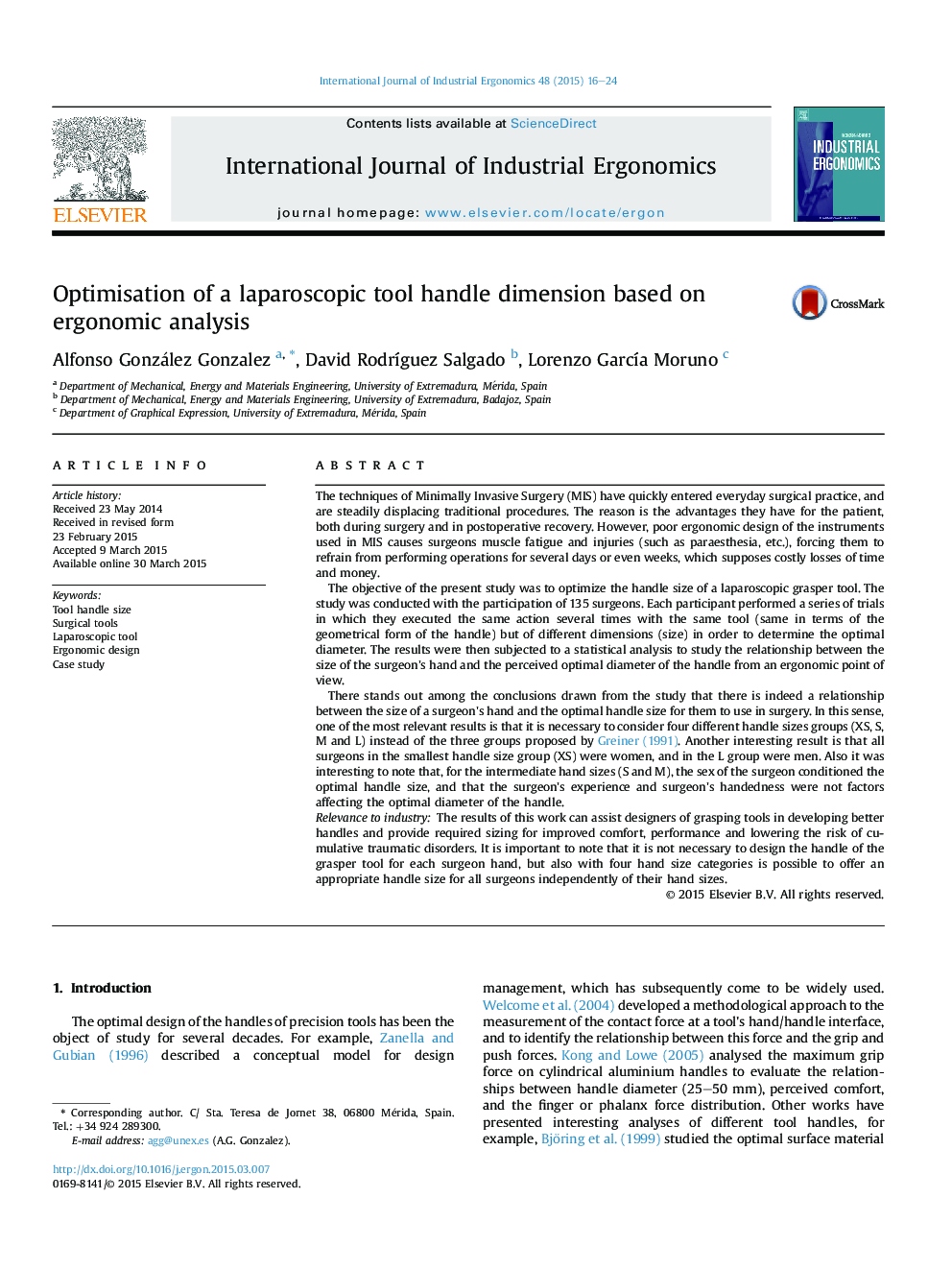| Article ID | Journal | Published Year | Pages | File Type |
|---|---|---|---|---|
| 1095989 | International Journal of Industrial Ergonomics | 2015 | 9 Pages |
•The study determines the handle size of a laparoscopic grasper tool.•The study was conducted with the participation of 135 surgeons.•The optimal diameter of the instrument is different for the four hand size categories.•The surgeon sex influences the optimal handle size for small and medium hand size.•Age, experience and surgeon's handedness have no influence on the optimal diameter for any hand size categories.
The techniques of Minimally Invasive Surgery (MIS) have quickly entered everyday surgical practice, and are steadily displacing traditional procedures. The reason is the advantages they have for the patient, both during surgery and in postoperative recovery. However, poor ergonomic design of the instruments used in MIS causes surgeons muscle fatigue and injuries (such as paraesthesia, etc.), forcing them to refrain from performing operations for several days or even weeks, which supposes costly losses of time and money.The objective of the present study was to optimize the handle size of a laparoscopic grasper tool. The study was conducted with the participation of 135 surgeons. Each participant performed a series of trials in which they executed the same action several times with the same tool (same in terms of the geometrical form of the handle) but of different dimensions (size) in order to determine the optimal diameter. The results were then subjected to a statistical analysis to study the relationship between the size of the surgeon's hand and the perceived optimal diameter of the handle from an ergonomic point of view.There stands out among the conclusions drawn from the study that there is indeed a relationship between the size of a surgeon's hand and the optimal handle size for them to use in surgery. In this sense, one of the most relevant results is that it is necessary to consider four different handle sizes groups (XS, S, M and L) instead of the three groups proposed by Greiner (1991). Another interesting result is that all surgeons in the smallest handle size group (XS) were women, and in the L group were men. Also it was interesting to note that, for the intermediate hand sizes (S and M), the sex of the surgeon conditioned the optimal handle size, and that the surgeon's experience and surgeon's handedness were not factors affecting the optimal diameter of the handle.Relevance to industryThe results of this work can assist designers of grasping tools in developing better handles and provide required sizing for improved comfort, performance and lowering the risk of cumulative traumatic disorders. It is important to note that it is not necessary to design the handle of the grasper tool for each surgeon hand, but also with four hand size categories is possible to offer an appropriate handle size for all surgeons independently of their hand sizes.
Graphical abstractFigure optionsDownload full-size imageDownload as PowerPoint slide
